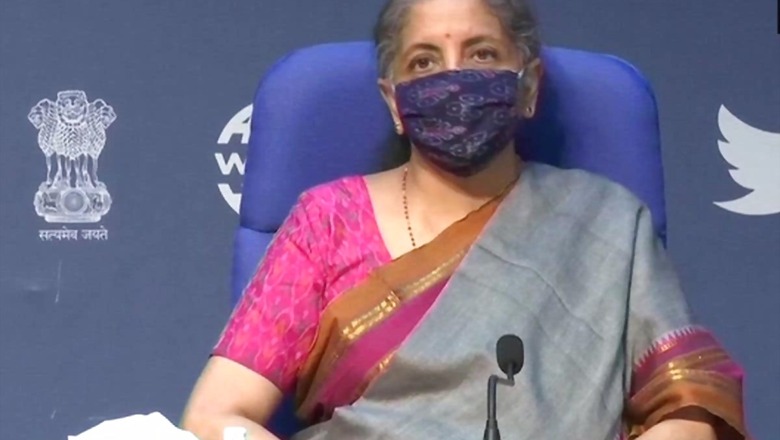
views
When finance minister Nirmala Sitharaman tables the annual Economic Survey in Parliament on Friday, policy wonks, researchers and those who track the Indian economy will be keenly watching out for one number: the growth projections for 2021-22.
As India prepares for the official report of its economy ahead of the Budget session, here’s a lowdown.
What is the Economic Survey?
The annual Economic Survey is usually presented a day before the presentation of the annual budget. It serves as the official report of the economy. This year, Finance Minister will table it in Parliament on January 29, Friday — two days before she presents the Union Budget for 2021-22 on February 1.
It was first presented in 1950-51 and submitted in the Lok Sabha along with the Union Budget until 1964. In 1964, the ministry started to release the survey a day before budget day. This practice has continued till last year. However, this year’s Economic Survey will be presented two days before the Budget, which is scheduled for February 1.
The Economic Survey is authored by Chief Economic Adviser (CEA) Krishnamurthy Subramanian and his team. In his first Survey in 2019, Subramanian had set an agenda of achieving 8% sustained Gross domestic product (GDP) growth to make India a $5-trillion economy by 2024-25, as envisioned by Prime Minister Narendra Modi.
However, the coronavirus pandemic severely impacted the Indian economy in 2020. It contracted by a massive 23.9% year-on-year (YoY) in the April June quarter. This was the first GDP contraction in more than 40 years. For the July-September quarter, India’s GDP contracted 7.5% year-on-year, as per estimates released by the National Statistical Office.
What does it contain?
It gives a detailed account of the state of the economy, prospects and the policy challenges. It carries sectoral overviews and comments on reform measures that are required. The survey’s outlook serves as a marker about future policy moves.
What projections does it contain?
The survey puts out economic growth forecasts, giving out detailed reasons why it believes the economy will expand faster or decelerate. It also sometimes forcefully argues for some specific reform measures.
Are such recommendations binding?
The government is not bound to follow these recommendations and only serve as a policy guide. The Economic Survey, in the past, has favoured policy moves that come into conflict with the official line of thinking of the government in power. These do not necessarily serve as pointers to what to expect in the annual budget. On many occasions, policy changes recommended in the Economic Survey have not been reflected in budget proposals.
What are the expectation this year?
This year’s Economic Survey is expected to provide a detailed assessment of the impact of coronavirus pandemic on Indian economy.
The Survey’s gross domestic product (GDP) growth projections for 2021-22 and estimates for the current year (2020-21) will be among the most tracked pieces of statistics as it would offer cues on how quickly the government expects the economy to accelerate to a faster lane.
The Central Statistics Office’s (CSO’s) first advance estimates, released earlier this month, projected that India will decelerate at (-) 7.7 percent in 2020-21.
Covid-19 and its spread has left a devastating trail of destruction across the economic landscape, blowing into smithereens the very framework of orthodox fiscal policy planning.
Every element in the world’s and India’s, fiscal policy planning, almost every component in the annual accounting exercise, and every element of assumption and projection now requires a second look.
In May 2020, when finance minister Nirmala Sitharaman first announced a raft of agriculture reform measures, many saw these as Modi government’s demonstration of its intent to walk the talk on marshalling reforms that promised to tilt the terms in the favour of farmers.
Structurally, these moves were predicated on legislative changes. These required an overhaul of laws that, in many ways, provided the oxygen to vested interests—unscrupulous middlemen to local political strongmen—that kept previous regulations alive.
The three laws that the Modi government legislated— the Farmers’ Produce Trade and Commerce (Promotion and Facilitation) Act, 2020; Farmers (Empowerment and Protection) Agreement on Price Assurance and Farm Services Act, 2020, and the Essential Commodities (Amendment) Act, 2020—seek to facilitate barrier-free trade of farm produce outside the markets notified under the various state Agriculture Produce Market Committees (APMC) laws.
Read all the Latest News, Breaking News and Coronavirus News here




















Comments
0 comment